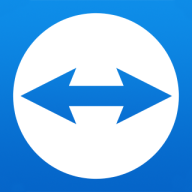


TeamViewer Business and Parallels Access are competing remote access solutions catering to business needs. TeamViewer Business offers robust remote connectivity features, potentially dominating due to its favorable findings and extensive functionality. Parallels Access shines with its unique, intuitive mobile access features.
Features: TeamViewer Business offers cross-platform compatibility, advanced security measures, and remote control capabilities suitable for diverse environments. Parallels Access provides seamless mobile access using "Applification" technology, transforming desktop apps into full-screen mobile applications.
Room for Improvement: TeamViewer Business could enhance its user interface for beginners, streamline its feature set for simplicity, and improve customer support efficiency. Parallels Access might benefit from expanding its desktop functionalities, enhancing cross-platform features, and improving integration with enterprise systems.
Ease of Deployment and Customer Service: TeamViewer Business boasts a straightforward installation process and flexible deployment options, supported by a rich resource library and technical assistance. Parallels Access offers quick installation designed for individual and small business use, with responsive support channels.
Pricing and ROI: TeamViewer Business offers a flexible, potentially cost-effective pricing model, yielding a substantial return on investment for businesses seeking extensive remote capabilities. Parallels Access provides competitive, affordable pricing for small teams and individuals, offering high ROI for mobile accessibility needs. The choice may depend on budget constraints and specific access requirements, with TeamViewer Business possibly delivering more value for large enterprises.
| Product | Market Share (%) |
|---|---|
| Microsoft Intune | 9.6% |
| TeamViewer Business | 11.1% |
| Parallels Access | 2.0% |
| Other | 77.3% |



| Company Size | Count |
|---|---|
| Small Business | 116 |
| Midsize Enterprise | 46 |
| Large Enterprise | 152 |
| Company Size | Count |
|---|---|
| Small Business | 38 |
| Midsize Enterprise | 29 |
| Large Enterprise | 26 |
Microsoft Intune provides centralized management of mobile devices and applications, ensuring security, compliance, and productivity through integration with Microsoft services like Microsoft 365 and Azure Active Directory.
Organizations use Intune for managing mobile devices and applications, enhancing security and compliance across platforms. With features like single sign-on, conditional access, and zero-touch deployment via Autopilot, it facilitates efficient operations. Intune's scalability, easy enrollment, and capabilities such as remote wipe support diverse device management, offering robust data protection and efficient operation. Despite its features, improvement areas include reporting, compatibility with non-Microsoft devices, and better support for macOS and Linux devices.
What are the key features of Microsoft Intune?
What benefits should users look for in reviews?
In industries such as finance, healthcare, and education, Microsoft Intune is implemented to ensure secure and compliant device management. Companies leverage its capabilities to deploy security policies and manage both corporate-owned and BYOD environments, facilitating a unified approach to data protection and compliance.
Parallels Access provides an efficient solution for remote computer access, catering to organizations seeking hardware resource conservation and centralized management. Enhanced productivity is achieved through seamless connectivity, particularly beneficial for CAD and ERP application remote access.
Utilized by businesses and academic institutions, Parallels Access offers robust remote access capabilities. The platform's publishing features enable application use without VPN, delivering high stability and usability for desktop mobile publishing. It supports Virtual Desktop Infrastructure, making it valuable for those needing remote control of computers via devices such as iPads and enhancing productivity for those unable to access their devices directly. System integrators and channel partners align with companies to provide comprehensive technical support for users requiring remote connectivity.
What are Parallels Access's features?Parallels Access is implemented across industries like automotive and education, emphasizing remote access to specialized applications such as CAD. Due to its ease of use, it supports centralized management for businesses working with ERP systems. Challenges include improving compatibility with Linux, Macs, and Unix servers, tackling aggressive pricing, addressing scaling issues, and enhancing reporting for user satisfaction.
TeamViewer Business offers seamless remote access with its cross-platform compatibility, robust security features, and user-friendly interface, making it ideal for technical support and remote collaboration in distributed environments.
TeamViewer Business is a powerful tool for remote access and technical support, valued for its ability to bypass firewalls and swift connections. It supports multiple operating systems like Windows, Mac, and Linux, facilitating access to servers and end-user machines. The tool is vital for help desks and IT departments, enabling technicians to control computers for troubleshooting, software installations, upgrades, and employee training. Although there are challenges with integration, backward compatibility, and stability with iOS devices, its efficient performance and remote control capabilities simplify tasks, especially for non-technical users.
What are the key features of TeamViewer Business?In various industries, TeamViewer Business plays a crucial role in managing distributed environments. It's essential for help desks handling remote problem-solving and employee training. Its ability to bypass firewalls and support cross-platform compatibility makes it a preferred choice for organizations needing to control devices across operating systems, simplifying IT management and technical support.
We monitor all Remote Access reviews to prevent fraudulent reviews and keep review quality high. We do not post reviews by company employees or direct competitors. We validate each review for authenticity via cross-reference with LinkedIn, and personal follow-up with the reviewer when necessary.